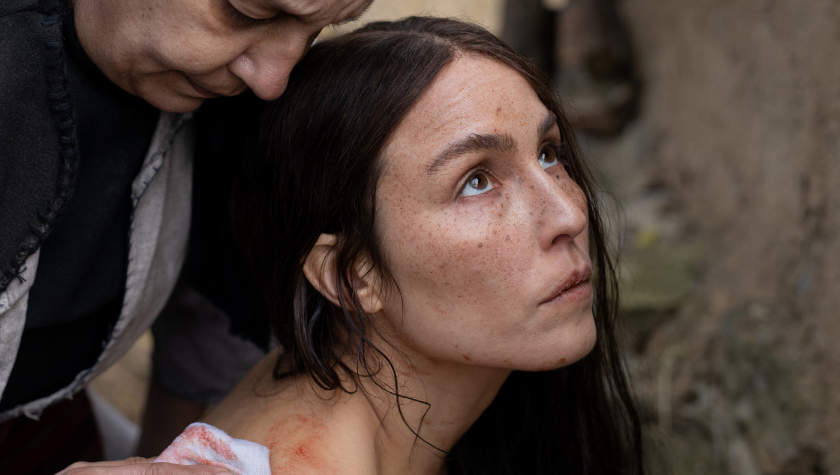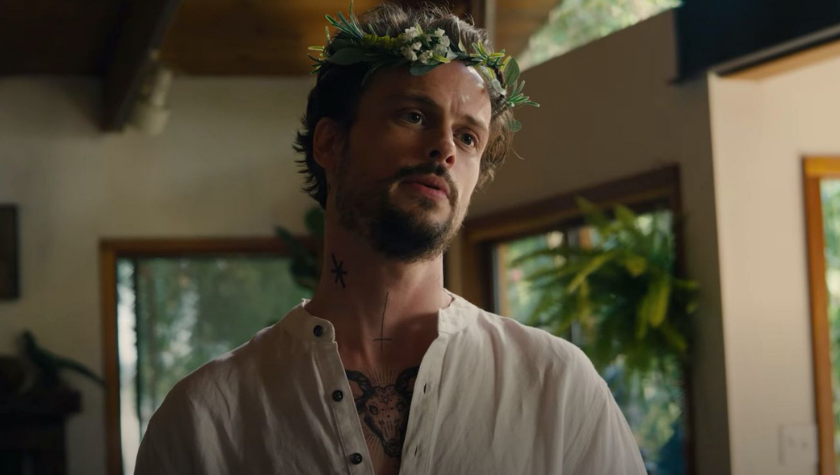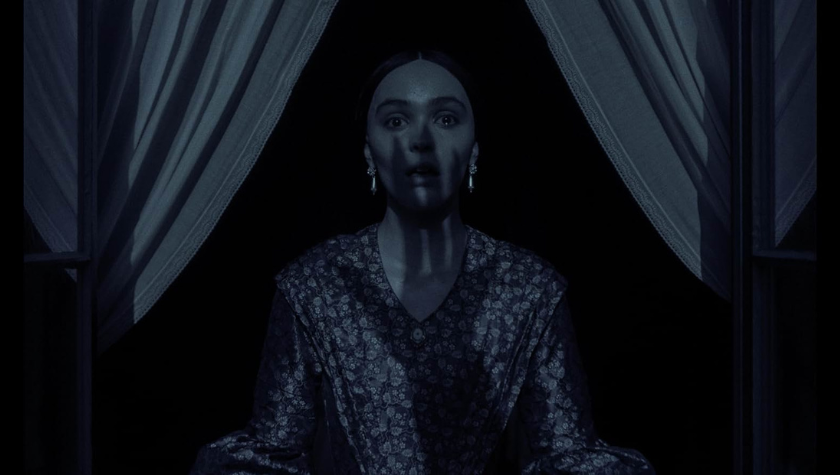Robert Eggers' unique and distinct style of filmmaking
May 17, 2022
Filmmakers have their own distinctive styles. The ones that truly stand out have a unique ability to tell their stories in a visually compelling and stylistic way that fans spot immediately. Aaron Sorkin's dialogue stands out above other writers. Michael Bay’s colorful palette and impossible action sequences are his trademarks.
A relative newcomer to cinemas, someone who has their own unique brand of storytelling, is Robert Eggers. His feature film debut with The Witch in 2015 earned him a Best Directing Award at the Sundance Film Festival and launched the career of Anya Taylor-Joy (The Queen's Gambit). Immediately after the screening, Eggers was sought after to take over almost any movie franchise he wanted and launch a career in Hollywood.
He didn’t do that.
Instead, four years later, he gave the world The Lighthouse, a black-and-white film about two lighthouse keepers slowly descending into madness. His legacy was set and had an increasing fanbase of cinephiles who appreciate his storytelling and willingness to take chances on unique ideas that are nearly impossible to market.
What can storytellers learn from Eggers and his fresh style of filmmaking?
Building on history and folklore
The Witch, The Lighthouse, and The Northman were created with a lot of background in folklore and history. For The Witch, the final card in the film states: This film was inspired by many folktales, fairytales, and written accounts of historical witchcraft, including journals, diaries, and court records. Much of the dialogue comes directly from these period sources.
This concept seems to guide Eggers’ films. The dialogue alone seems true to the time, even if there were never any recordings made. The films are rich with folklore and history providing the audience with not just a movie to watch, but an experience.
Each of his feature films has the feel of a story being passed down in front of a fire and defines a people and their history. It’s a great way for storytellers to create their own narrative from something that exists but isn’t IP.
Eggers’ first two short films were Hansel & Gretel and The Tell-Tale Heart, both known entities that are public domain. With his feature films, he didn’t use previous works but rather delved into research creating a narrative about people in a specific time and location, some just starting on the concept of ‘What if a lighthouse was haunted?’
Whether it’s witches, lightkeepers, or the settling of North Atlantic territories, each one is based on oral traditions, folklore, or historical relevance – all the basis for a great story.
Starting with a small cast
There aren’t many people in a Robert Eggers film. In The Lighthouse, the audience literally spends almost the entire movie with two characters. In The Witch, the whole film focuses solely on a family in 1630s New England living in isolation as strange things start to happen. While The Northman is much broader in scope and has a grander story to tell, the cast size is still relatively small with many scenes only having a few characters.
Eggers seems to like to focus on a single set of characters in isolation. Even with The Northman, Amleth (Oscar Novak, Alexander Skarsgård) often finds himself in a scene with just one other character or prowling alone as he aims to achieve his goal of revenge.
For his first two films, writers can see how Eggers builds engaging character pieces with only a handful of actors in a few locations. It’s an ideal combination for independent filmmakers eager to bring on actors who seek out challenging roles while keeping costs down. It’s no wonder high-caliber actors like Robert Pattinson and Willem Dafoe worked on an artistic endeavor like The Lighthouse.
Specific language
Eggers’ films have a specific language to them dedicated to the authenticity of the time period and locations. For The Witch, it’s almost Shakespearean. In The Lighthouse, it’s salty, longshoremen in New England.
It’s apparent that the deep research that Eggers puts into his films comes out in how his characters speak. Whether it’s historically accurate, we may never know. But film is about authenticity and, when research dives into journals and diaries, the filmmakers can get a genuine glance into how people talk.
The three feature films by Robert Eggers
The Witch (2015): A movie titled The Witch would make an audience think it’s about a witch. For the most part, though, there is the illusion of a witch wreaking havoc on a New England family in the 1630s. While strange things occur, the family plays a blame game of sorts as the siblings point fingers at each other insisting they are witches. It’s as if the witch is merely a scapegoat – only something more sinister is about and Eggers refuses to let the audience know what it specifically is.
This is the first feature film for Robert Eggers and sets up his style for his following endeavors. It’s common for filmmakers to find their hometowns' ideal locations for stories and Eggers is no exception. Many M. Night Shyamalan films take place in or around Philadelphia. Many Paul Thomas Anderson movies are set in the San Fernando Valley. They have a familiarity with these locations and find them inspirational settings for their stories. Eggers is from New Hampshire and likely had exposure to the folktales and history of witchcraft in the area, as he likely did for New England tales in lighthouses or early Viking voyages in the North Atlantic.
The Witch is about a family overcoming strife and facing isolation, themes that Eggers continues to use. There is also the use of animals as part of the folklore in telling the story, which often means their presence foreshadows something ominous.
The Lighthouse (2018): This is the story of two lighthouse keepers who slowly descend into insanity after spending time taking care of a lighthouse on a remote New England island. The concept of the film started out as a ghost story but soon, through research, became based on a true story from the early 19th century (the film takes place in 1890). Like The Witch, isolation in dangerous territory is the backdrop.
The two men played by Robert Pattinson and Willem Dafoe are in primal situations, often doing tiring, tedious work and subjected to the harsh environments they live in. Their lives are both simple, yet far from it (eat, sleep, take care of the lighthouse, repeat). There’s an aspect of The Shining throughout The Lighthouse to the point where one would expect Young Thomas to insist that “All work and no play makes Jack a dull boy” before setting off in a psychotic fit.
Once again, animals play a role in foreshadowing danger. Seagulls are often flying around, even bothering Young Thomas (Pattinson). When Older Thomas (Dafoe) shares why it’s bad luck to kill a gull, it’s almost an invitation for Young Thomas to end up doing just that and face the dire consequences. Folklore plays another role in this film with the appearance of mermaids and other sea creatures that seem to attack or entice Young Thomas.
The Lighthouse is a great example for filmmakers to see how to build tension and conflict in a film with really only two characters and one location.
The Northman (2022): What is fate? The Northman is built on the protagonist’s single destiny and how he achieves it. After his father is murdered by his brother and his village attacked, a young Amleth (Novak) flees repeating a mantra that becomes his destiny:
I will avenge you, Father!
I will save you, Mother!
I will kill you, Fjölnir!
Although completely different from his two other features, there are still plenty of similarities that make The Northman a Robert Eggers film. Like his others, this film puts intense characters into intense situations, animals are often foreshadowing danger or metaphors for other characters, and folklore and history play a crucial role in telling the story. Even The Northman starts out almost exactly like The Lighthouse: foreboding waves and darkness leading to an island.
Robert Eggers has an uncanny ability to tap into history and folklore to share original stories and create a film experience that is artistic, unique, and wholly his own. There are many writing lessons to learn from Eggers. Just don’t try to copy him.
Written by: Steven Hartman
Steven Hartman is an award-winning, optioned screenwriter. He was a Top 5 Finalist in Big Break’s Historical Category in 2019 and won Best Action/Adventure in Script Summit’s Screenplay Competition in 2021. He holds a Bachelor of Arts degree from Columbia College and had internships at Jerry Bruckheimer Films and Village Roadshow Pictures. Steve is a full-time writer and creative video producer by day and a screenwriter and novelist by night.- Topics:
- Discussing TV & Film




